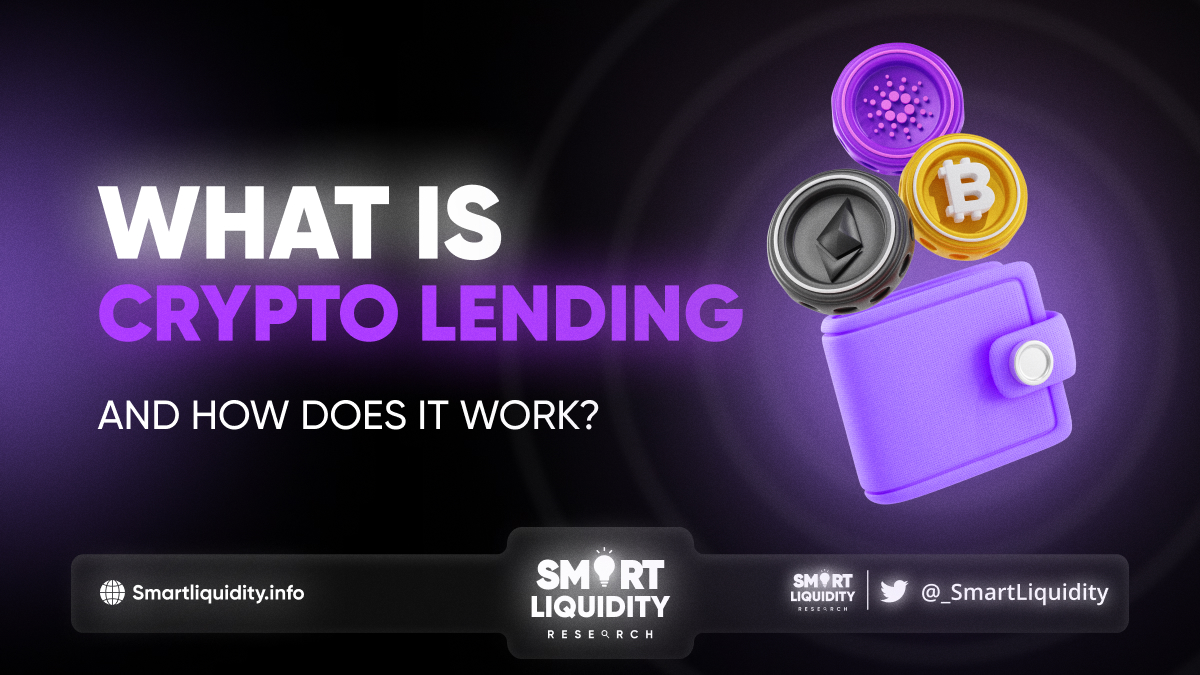What Is Crypto Lending and How Does It Work?


One of the most significant developments in DeFi was the introduction of crypto lending. This meant earning passive income from previously illiquid assets for lenders. A borrower might get instant cash for their Cryptocurrency without incurring any tax consequences. Crypto financing has given almost all cryptocurrencies much greater practical use and, by extension, value.
Crypto Lending Explained
In crypto lending, cryptocurrency is borrowed to customers in exchange for payments with interest. In most cases, bitcoin deposits and compounding occur daily, weekly, biweekly, or monthly.
It’s important to distinguish between the two primary categories of crypto lending platforms: centralized and decentralized. Borrowers of both kinds of cryptocurrency loans are often mandated to deposit collateral to access the interest rates offered (about 20% APY).
Flash loans are unsecured loans that must be repaid in almost the same transaction they were obtained. If this is not accomplished, the loan agreement is canceled before it is formalized. Crypto loans streamline borrowing and lending procedures thanks to smart contracts. Many people use it since it’s simple to get low-cost financing or earn APY on their own crypto assets.
However, crypto lending has financial risks, much like any blockchain-based enterprise, smart contract, or investment. For instance, if you employ a currency prone to price swings as collateral, you may be liquidated in a single day. In addition, significant losses might potentially result from the compromise or abuse of smart contracts.
It’s essential to keep in mind that you won’t have physical access to your coins if you borrow or lend money. It decreases your available funds and frees them off your control. Pay close attention to the loan’s stipulations so you know when to expect your money and how much you’ll be charged for using it.
How Does Crypto Lending Work?
In most crypto loan transactions, there are lenders and borrowers, including a DeFi system or crypto exchange. In order to secure a loan in Cryptocurrency, the borrower often provides collateral. Instant cash loans may also be used if collateral is not required.
A platform that lends out monies from another user or a smart contract that is able to mint stablecoins could be the reverse aspect of the loan. Investors contribute their Cryptocurrency to a pool, which subsequently handles the whole operation and sends the lenders a portion of any interest earned.
Contrasted with DeFi marketplaces, CeFi platforms include additional hoops through which you must leap. For example, a cryptocurrency exchange account, such as with Binance, Coinbase, or BlockFi, is a must for using their cryptocurrency loan services. In addition, the Know Your Customer (KYC) process also necessitates providing personal identification information and financial data. After signing up for a cryptocurrency exchange, you may see its loan rates under a section called something different on each site.
What Does a Crypto Lender Do?
To put it simply, a Crypto lender accepts Cryptocurrency as payment and lends it to another user for a charge. Each service has its unique process for handling loans. Cryptocurrency loan services exist on both controlled and decentralized systems, with fundamentals remaining the same.
Lending digital money to investors or cryptocurrency firms, who may use them for speculation, hedging, or operating capital, is how crypto lenders generate income. The margin between the interest offered on deposits and the interest charged on loans is what lenders use to profit.
How Can Money Be Made By Crypto Lending?
Depositing Cryptocurrency into a lending platform allows customers to earn interest rates far higher than those offered by conventional financial institutions. Deposits provide loans to borrowers who cover the interest cost, and any excess may be invested to generate additional income.
Charges for crypto lending vary among exchanges. Therefore, your ROI is intrinsically linked to the platform of your choice.
Furthermore, every cryptocurrency loan platform has its rate of return and associated hazards. As a result, it’s vital to weigh several platforms to disperse the dangers. It will help you spread your money around and reduce risk.
There is an average annual return that may be anticipated from crypto lending. The range for cryptocurrencies is 3-8%, whereas stablecoins are 10%-18%. Each Cryptocurrency investing platform has its per-coin price. If you’re looking to maximize your profits, choosing a system that supports the assets you have in your wallet is essential.
Crypto lending is an excellent way for cryptocurrency investors to earn profits without selling their holdings. If you’re ready to lend out your bitcoin, the cryptocurrency exchange KuCoin is now providing APYs of above 25%.
Would this offer be too tempting to be true? Crypto lending is unquestionably riskier than the finest increased savings accounts, which offer substantially less interest. There is no assurance that you will make money investing in Cryptocurrency. What follows is essential information.
Pros and Cons of Crypto Lending
Loans secured by digital assets (cryptocurrencies) have been a staple of the DeFi industry for some time now. However, a few drawbacks make them less than ideal, despite their widespread use. So before you try out any new borrowing or lending strategies, be sure you’ve considered all the pros and cons.
✅Pros
🔹Funds are easy to get: Anyone with collateral or the ability to repay quickly may get a crypto loan. For this reason, they are more accessible than bank loans without the hassle of a credit check.
🔹Loans are handled through smart contracts: A smart contract streamlines the loan and borrowing process by automating the previously manual steps.
🔹Passive income is easy to generate with minimal effort: People who hold their cryptocurrencies for the long term may deposit them in a secure wallet and start collecting APY immediately.
⛔️Cons
🔹Collateral may be liquidated at high risk: Despite massively over-collateralized debts, a sharp decline in cryptocurrency values might cause rapid liquidation.
🔹In some instances, smart contracts may be breached: You risk losing the funds you borrowed or the collateral deposited for the loan if the program was poorly built or if it had a back door that might be exploited.
🔹The hazard of your investment portfolio might rise if you borrow or lend it out: While it’s wise to spread your investments out, doing it through loans introduces unnecessary uncertainty.
Closing Thoughts
When operated ethically, cryptocurrency lending systems benefit both borrowers and investors. Hold-out investors may use their holdings as collateral to access previously unavailable investment opportunities.




